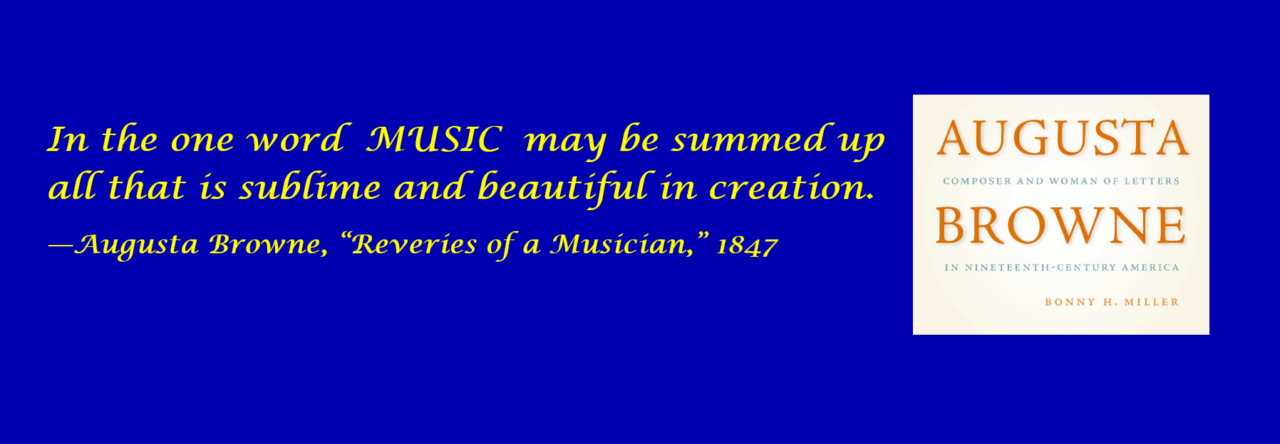Boydell and Brewer invites recently published authors to write a short essay for their blog, Proofed. The format gives authors a chance to reveal personal aspects of their new publications, such as the process of evolution of the book, or an occasion to delve into a tangent that was omitted from the publication. My guest entry about Augusta Browne appeared during August 2020. You can read it in full at:
I enjoyed the opportunity in Proofed to use examples of Augusta Browne’s newspaper advertisements that could not be illustrations in the biography. A personal favorite is the ever-so-politely worded announcement in November, 1841, in the New York Tribune that advertised Browne’s teaching and sheet music for sale when she was just starting out in New York City.

The young professor taught at the homes of students or in her family residence at 790 Broadway. The expression “finishing lessons as usual” meant coaching of advanced performance skills for young women who sang or played in the parlor to entertain friends and family members.
Another illustration that I was eager to share comes from the Lady’s Almanac for 1854 (Boston: John P. Jewett, [1853]). This annual lists Augusta Browne as one of America’s outstanding “female writers.” The delightful cover of the book shows a young woman author—or “authoress,” as Augusta Browne termed herself—at her desk. Unworldly hands hold and point to a winged hourglass. This image reminds the reader that time flies, tempus fugit, and a woman’s time should not be spent in wasteful or frivolous activities. The entire Lady’s Almanac can be seen in the HathiTrust Digital Library: https://babel.hathitrust.org/cgi/pt?id=wu.89098850472&view=image&seq=1

I hope that readers with a range of interests in American music, literature, and nineteenth-century life will find relevant topics in Augusta Browne: Composer and Woman of Letters in Nineteenth-Century America. I never expected that people would read Augusta Browne from first page to last. Students and faculty are always pressed for time. I invite them to seek out and turn to the areas of greatest relevance for their research.
There are readers who will want to know about Browne’s music, while others may be more interested in her prose or journalism. And some will prefer to follow her life through the lens of American history. Browne was buffeted by two wars (the Mexican War and the Civil War) and three financial panics (1837, 1857, and 1873). She succeeded through Christian faith and creative work in negotiating these obstacles as well as the tragic early deaths of her husband and no less than six of her brothers and sisters. Browne’s entrepreneurial struggles and successes amidst the gendered culture of the Victorian era will resonate with many readers across the time divide.
©Bonny H. Miller, All Rights Reserved 2020
